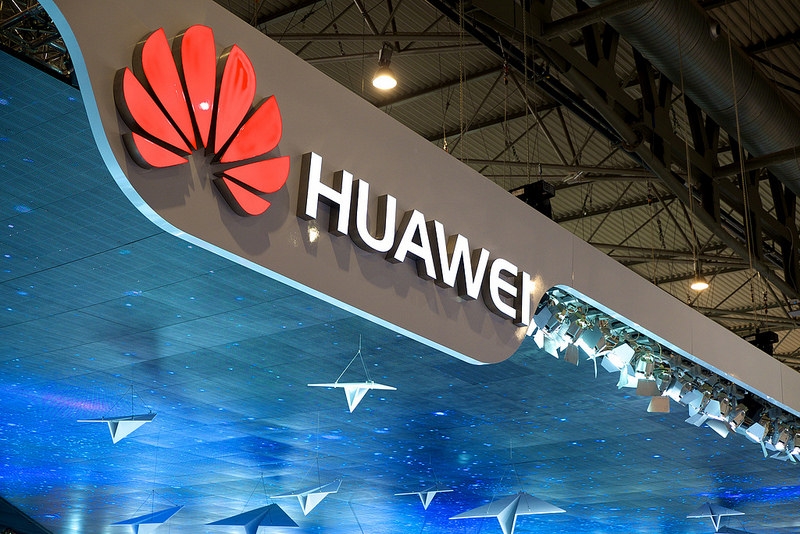Chinese telecoms giant Huawei posted an eye-popping 70% growth in 2015. It is now beating HTC and Sony when it comes to market share in Europe and is third only to Apple and Samsung when it come to global smartphone sales.
Huawei’s growth is another indication of how Chinese companies are successfully moving away from their traditional strategy of producing cheaper products to attack the low-end of the market.
The world of smartphones, tablets, smart watches and connected devices of the internet of things is the new battleground to provide digital services. And Huawei has quickly announced itself as a serious player in it. Last year’s success was built on a strategy that rival Western firms have excelled in – marketing, brand building and customer service.
The race to engage
Existing brands such as Blackberry and Sony are already engaged in competitive marketing in both product and customer engagement to grab a piece of the large but finite customer base, so Huawei’s rapid rise to overtake them is very impressive. Huawei increased its global share of the smartphone market from 6.8% in 2014 to 9% in 2015 – a massive 50% gain compared to Apple’s growth of 27%. Investors tablets and smartphone share 2015

It’s a crowded android market. TechStage, CC BY-ND
It suggests Huawei now understands how to play the smartphone market. New organisational and workforce strategies that have a laser focus on a customer-first mindset, tightly driven by the needs of the local market, have been put together. In a crowded price-sensitive android market this matters greatly where choice and brand awareness are critical.
Just competing on product functionality and a brand name is not enough when the nature of “smart” means you have connected consumers and feedback on social media is instant. Huawei understands that the mobile market is now all about the customer service experience and no longer just a telecoms commodity. Getting hold of the consumer and personalising the digital world for them with a good experience and price point that fits their needs and lifestyle choices is also critical.
Huawei is a prime example of a modern commercial mindset emerging from Chinese industries. Its marketing embraces local markets and they aggressively target consumers with sponsorship deals that include a host of big football clubs across Europe, including Arsenal, Paris Saint-Germain and AC Milan Sponsorship. Plus, their product portfolio spans the complete modern telecoms provider from hardware to software.

Huawei is going head to head with Apple. Kārlis Dambrāns, CC BY
Three ways to succeed
Customers cannot be taken for granted in this tough market. History shows that customers lack pure brand loyalty – they are more loyal to the experience, the community and ecosystem of services that best fits their needs. With so much choice out there, it is more about listening and socially engaging with the customer that is key.
At least three key strategies seem to be emerging in the growth of the telecoms players in the new mobile, wearables and connected internet of things services.
-
A strong focus on “customer first” philosophy from the CEO down through the whole organisation to effectively manager customer experience 24/7.
-
Using third parties to sell your products and a service that adds value and extends penetration into new markets. Huawei has a partner programme that drives sales across its portfolio. Recent awards in Asia in 2015 follow expansions into Australia in 2011 and similar regional strategies across Latin America, the Middle East and Europe. This federated supply chain model allows companies to extend their workforce and has accounted for more than 55% of Huawei’s growth from these third party sales. It is increasingly essential for scaling up sales regionally.
-
Embracing international standards to get into thought leadership positions. For example by joining The Open Group, a major software standards consortium, and its Digital Business and Customer Experience (DBCX) workgroup helps Huawei define initiatives on connected customer and product design. Taking part in these kinds of groups enables firms to raise their game and influence in new markets by getting smarter in the way they interact with existing and potential customers and partners. It can then be translated into improving working practices – from managing the supply chain to service delivery – across the board.
What Huawei has done well is realise that consumers are always connected. Companies that exploit this will start to gain more ground in the battle for owning the digital market. It requires more than the specific strategies, but thinking holistically about how to transform to a digital operating model in this new world of connected things.
 Mark Skilton worked for PA Consulting.
Mark Skilton worked for PA Consulting.
Mark Skilton, Professor of Practice, University of Warwick
This article was originally published on The Conversation. Read the original article.



 Robotic Baristas Serve Coffee and Crypto at Dubai's Token2049 Event
Robotic Baristas Serve Coffee and Crypto at Dubai's Token2049 Event  Tesla Cybertruck Gets Major Upgrades in Exciting Spring Update
Tesla Cybertruck Gets Major Upgrades in Exciting Spring Update  Railgun Denies North Korean Use, Approaches $1B Volume Amid Vitalik Buterin's Praise
Railgun Denies North Korean Use, Approaches $1B Volume Amid Vitalik Buterin's Praise  Is attachment theory actually important for romantic relationships?
Is attachment theory actually important for romantic relationships?  Shiba Inu Faces Downtrend, XRP Undervalued, Ethereum Eyes Market Comeback
Shiba Inu Faces Downtrend, XRP Undervalued, Ethereum Eyes Market Comeback  JPMorgan to Leverage AI Across Banking Operations, Jamie Dimon Confirms
JPMorgan to Leverage AI Across Banking Operations, Jamie Dimon Confirms  Samsung Implements Emergency 6-Day Work Week to Combat Slowing Growth
Samsung Implements Emergency 6-Day Work Week to Combat Slowing Growth  Naver Pay, Billboard Ink MOU for Fintech-Entertainment Services; Billboard Korea to Launch in June
Naver Pay, Billboard Ink MOU for Fintech-Entertainment Services; Billboard Korea to Launch in June  SHIB, BONE Prices Rally: Factors Fueling Memecoin Market Recovery Revealed
SHIB, BONE Prices Rally: Factors Fueling Memecoin Market Recovery Revealed  Tesla's Flood Resilience Tested by Dubai's Historic Rainfall
Tesla's Flood Resilience Tested by Dubai's Historic Rainfall  ‘They don’t have enough’ – schools in England are running food banks for families
‘They don’t have enough’ – schools in England are running food banks for families  Gym hygiene guide: the dangerous bacteria that lurk in dirty fitness equipment and clothes
Gym hygiene guide: the dangerous bacteria that lurk in dirty fitness equipment and clothes  Volkswagen Unveils New EV Platform in China to Cut Costs, Challenge BYD
Volkswagen Unveils New EV Platform in China to Cut Costs, Challenge BYD  Why are blooper reels so funny?
Why are blooper reels so funny?  An education in music makes you a better employee. Are recruiters in tune?
An education in music makes you a better employee. Are recruiters in tune?  After Iran’s attack on Israel, is a devastating regional war next?
After Iran’s attack on Israel, is a devastating regional war next?  A new wave of wearable devices will collect a mountain on information on us
A new wave of wearable devices will collect a mountain on information on us 






























